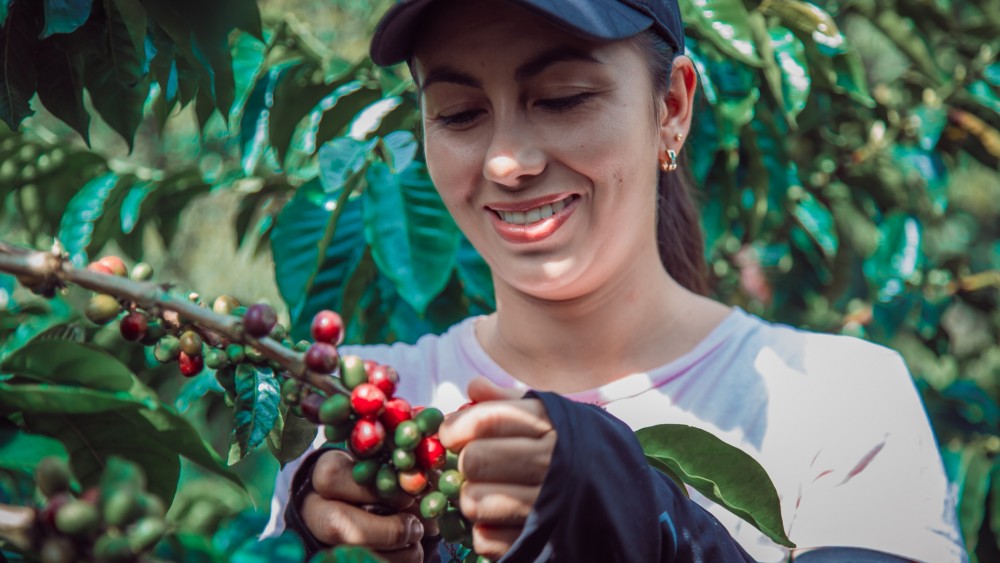Sunday January 5, 2025
- ALL NEWS
- SMALL & MEDIUM ENTERPRISES (SME)
- INTERNATIONAL TRADE
-
REGIONS
-
NON-REGIONAL
Search

Did you know that cherry trees' fruit is the source of coffee? That is true! Cherries are used to make coffee beans. Additionally, coffee does not grow well or sustainably everywhere in the world, like every other product that begins as a seed and develops into a plant before becoming a finished good. When examining the nations that produce coffee, you will discover that the majority of them have similar geographic characteristics.
The Bean Belt is a key region for the expansion of the coffee industry. The region between 25° N and 30° S is referred to by this term. Anywhere that is too close to the northern or southern poles won't be a viable or significant spot to grow coffee because the plant prefers milder climates. With the exception of Canada, regions of Africa, Asia, South America, and North America are the most prevalent for both coffee imports and exports.
Around 70 countries produce coffee, but not all of them export their finished product. Some only grow their own cherry trees and produce coffee beans domestically. There are fifty countries that both manufacture and export coffee, focusing on those that sell their products to consumers worldwide. The top 10 coffee producing countries in the world are:
• Brazil, 5,714,381,000 pounds
• Vietnam, 3,637,627,000 pounds
• Colombia, 1,785,744,000 pounds
• Indonesia, 1,455,050,000 pounds
• Ethiopia, 846,575,000 pounds
• Honduras, 767,208,000 pounds
• India, 767,208,000 pounds
• Uganda, 634,931,000 pounds
• Mexico, 515,881,000 pounds
• Guatemala, 449,743,000 pounds
Brazil's development has been significantly influenced by the production of coffee, which is still a key factor in the nation's economy today. French settlers initially brought the plant to Brazil at the beginning of the 18th century. Brazil has been the world's top producer of coffee since the 1840s, when the beverage first gained appeal among Europeans. Over 300,000 coffee farms are dispersed throughout Brazil.
Brazil is anticipated to produce 58 million 60-kilogram bags of coffee in the 2022–2023 marketing year, making up more than a third of global production, according to the United States Department of Agriculture (USDA).
Vietnam is one of the biggest producers of coffee while being relatively new to the global market. The Communist Party placed a significant wager on coffee in the 1980s, and as a result, production rose 20% to 30% annually during the 1990s, radically altering the country's economic structure. According to the USDA, Vietnam is anticipated to produce 32.2 million 60-kilogram bags of coffee in 2019–2020.
By concentrating largely on the less expensive Robusta bean, Vietnam was able to carve out a niche for itself in the global market. The caffeine content of Robusta beans can be up to twice that of Arabica beans, giving the coffee a more bitter flavor. With more than 40% of the world's production in the 2022–2023 marketing year, Vietnam is the top producer of Robusta coffee.
A popular advertising campaign featuring a fictional coffee farmer named Juan Valdez helped brand Colombia as one of the most famous coffee-producing nations. Colombia is renowned for its quality coffee and is expected to produce 14.3 million 60-kilogram bags of coffee in 2022-2023.
For several years beginning in 2008, Colombian coffee crops were hit by a leaf disease known as coffee rust. Output plummeted but has since rebounded as the country replaced trees with rust-resistant varieties. Colombia ranks second in arabica production, and millions worldwide prefer their mild, well-balanced flavor.

Indonesia is now the third-largest producer of Robusta beans in the world thanks to its geographic location and climate. In the 2022–2023 marketing year, there will be a total production of 10.7 million 60–kg bags, including Robusta and arabica. There are 1.2 million hectares of coffee crops in Indonesia; the vast bulk of production is produced by tiny, independent farms, each of which has one to two hectares.
The most intriguing specialty coffee produced in Indonesia is Kopi Luwak, one of several highly sought-after varieties. The beans, which are obtained from the Asian palm civets' waste, have a distinct and understandably unusual flavor. One of the most costly coffee beans in the world are produced as a result of the labor-intensive collection and harvesting process.
In the 2019-2020 marketing year, Ethiopia is predicted to produce 7.3 million 60-kilogram bags, just beating out Honduras, which had displaced it from No. 5 in the 2016-2017 marketing year. Ethiopia reclaimed that position in the 2018-2019 year.
According to the USDA, Ethiopia, the largest manufacturer of coffee in Africa, expects to export a record amount of coffee in the 2022–2023 marketing year.
Back off to Central America, we find Honduras nudging ahead of Ethiopia at number five, taking the biscuit by 3,795 additional metric tons.
Although Honduras shares similar climatic characteristics with Costa Rica and Guatemala, its current place among the world's top exporters of coffee is astounding given that it was previously mostly unnoticed.
Poor infrastructure previously made it difficult, which resulted in the majority of their coffee being sold domestically and only 10% of their output being exported. However, their coffees have become more popular in recent years.
The majority of Honduran coffees are produced on little mountain farms called "Fincas" at elevations of between 1400 and 1700 meters. Since many of these "Fincas" have their own unique microclimate, they can produce a wide variety of flavor profiles and scents, from vanilla to red fruit- and hazelnut-based.
Despite being historically known for producing Arabica coffee, since the turn of the century, 60% of their harvest is now Robusta.
Coffee is farmed largely in the southern Indian states of Kerala, Tamil Nadu and Karnataka. The majority of the coffee produced in India is exported to Europe, where it is typically brewed into blended drinks. Baba Budan, a man who snuck some coffee beans into India from the Middle East and planted them in Karnataka, brought coffee back to India's shores. The rest is history.
The biggest export from Uganda is Robusta coffee. The coffee beans are an indigenous plant found deep within the rain woods and have been grown for generations. They are regarded as some of the most uncommon naturally occurring coffee trees anywhere.
Western Nile, Okoro region, northern Lira and Gulu, eastern Mbale and Bugisu, central and southwest Jinja, Mukono, Kampala and Masaka, as well as western Kasese and Mbarara, are the main Robusta growing regions.
Coffee first arrived in Mexico in the late 1700s, introduced by Spanish settlers. These days the country produces a significant amount of coffee, though its place as a producer of coffee on a global scale has been significantly diminished due to the entry of untraditional Arabica producers on the scene and, in particular, due to crop losses due to coffee leaf rust. Although the country is one of the foremost exporters of certified coffee (both organic and fair trade), the specialty market for quality is yet to make significant inroads here. This is not because Mexico lacks potential for producing quality lots: the country boasts a huge number of growing regions with agreeable altitudes and climates, as well as hundreds of thousands of experienced, well-established small-scale farmers. With more than 600 thousand hectares in 12 states under primarily Arabica coffee production, Mexico has great untapped potential for the production of specialty lots.
Before the late 1850s, when the country's dye business collapsed as a result of the introduction of chemical dyes to Europe's textile industry, coffee was not thought of as a crop.
By 1880, coffee accounted for 90% of Guatemala's exports, and it continues to be their biggest product even today. The crop's reputation for quality is well-deserved. The predominant varieties, which are almost all Arabica, are Caturra, Red and Yellow Catuai, and Red and Yellow Bourbon. Guatemalan coffee beans flourish in districts like Antigua, Acatenango, Atitlán, Cobán, Huehuetenango, Faijanes, San Marcos, and Nuevo Orientea that have rich volcanic soil, low humidity, lots of sunshine, and chilly nights.
Check our Exports News' blog section and take full advantage of all the benefits we offer if you are new to the world of trade and need more important information.
No Comments
Add comment



We’re happy you are satisfied with Exports News. Please let us know if you need enything!
support@exportsnews.comWe’re sorry your experience was not satisfactory. Please let us know how we can improve your experience:
Please contact us with any questions or concerns: support@exportsnews.com


Your feedback has been received! If you have any other questions or concerns, please contact us at:


There aren't any comments yet. Be the first to comment!